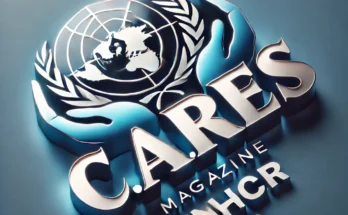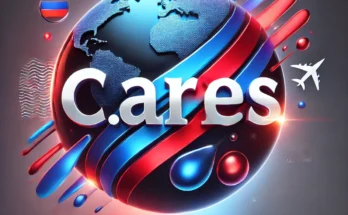Parole Process Invitation Letter
Analysis of the Family Reunification Parole Process Invitation Letter
Parole Process Invitation Letter. The Family Reunification Parole Process (FRP) invitation letter plays a critical role in the U.S. immigration system. It serves as a formal notification to eligible family members abroad, inviting them to apply for humanitarian parole to reunite with their families already residing in the United States. This letter reflects a broader effort to address family separation, a key concern in U.S. immigration policy. This analysis aims to break down the FRP invitation letter’s structure, purpose, and implications, emphasizing its role in facilitating family reunification.
Understanding the Family Reunification Parole Process
Family reunification has long been a cornerstone of U.S. immigration policy. The Family Reunification Parole Process is designed to allow immediate relatives of U.S. citizens or lawful permanent residents (LPRs) to enter the country temporarily, pending the approval of their immigrant visa. This process becomes particularly critical in cases where visa backlogs delay permanent reunification for years.
Humanitarian parole grants temporary entry into the U.S. for people in urgent need of entry due to family or other humanitarian reasons. The FRP invitation letter serves as the first step in this process, notifying the applicant that they meet the eligibility criteria and are invited to apply for parole.
This document contains essential information, such as who initiated the process, the eligibility requirements, the steps involved, and what documentation is needed to apply for parole. Additionally, it conveys a strong humanitarian message, underscoring the U.S. government’s recognition of the importance of family unity.
Parole Process Invitation Letter
Components of the Invitation Letter
Introduction and Purpose
The letter typically begins with an introduction that outlines its purpose. It clearly states that the recipient is invited to participate in the Family Reunification Parole Process, marking the first official step in their path to temporary entry into the U.S. The purpose is often expressed in terms of humanitarian principles, stressing the importance of family unity.
Eligibility Confirmation
A critical component of the letter is the eligibility confirmation. The recipient is informed that they meet the preliminary qualifications for the FRP. Eligibility is typically based on the applicant being an immediate relative (spouse, child, or parent) of a U.S. citizen or lawful permanent resident. This section not only reinforces the legitimacy of the application but also provides reassurance that the recipient is recognized by the U.S. authorities as a potential beneficiary of the program.
Application Instructions
The letter will include detailed instructions for applying for the Family Reunification Parole. This may involve filling out specific forms, submitting biometrics, and providing supporting documentation, such as proof of relationship to the sponsor and evidence of identity. Clear guidance is given on how to gather and submit this documentation. The U.S. Citizenship and Immigration Services (USCIS) stresses that applicants must follow the instructions carefully, as errors or missing documents can delay or jeopardize their application. This section is vital in ensuring that applicants can complete the process efficiently and avoid unnecessary hurdles.
Parole Process Invitation Letter
Timeline and Next Steps
Another important section of the letter details the expected timeline for the parole process. It provides an overview of what to expect after submission, such as waiting times for interviews, additional paperwork, and approval periods. While no fixed dates are given, this section sets expectations regarding the length of time the process may take, preventing applicants from experiencing undue frustration due to delays.
Humanitarian Considerations
A significant part of the FRP invitation letter is its focus on humanitarian concerns. The letter emphasizes the importance of family unity as a key aspect of U.S. immigration law. It highlights the moral and legal obligation to support family reunification, especially in cases where prolonged separation would result in undue hardship. Additionally, this section of the letter may reference the broader goals of the U.S. immigration system, such as promoting strong family ties and allowing immigrants to contribute meaningfully to their communities. This framing helps to provide a rationale for the Family Reunification Parole Program, positioning it as both a practical and humanitarian solution.
Contact Information and Resources
At the end of the letter, applicants are provided with contact details for further inquiries. This section often lists the USCIS website, relevant phone numbers, and specific offices or agencies that can assist with the application process. Resources for legal assistance or help with navigating the application requirements may also be included, underscoring the agency’s commitment to transparency and applicant support.
Significance of the Invitation Letter in Immigration Law
The FRP invitation letter serves as a pivotal document in the immigration landscape. It is more than a simple notification; it is a formal recognition by the U.S. government of the applicant’s eligibility to seek temporary entry for family reunification. As such, it represents a potential lifeline for families separated by borders and complicated immigration policies.
A Bridge for Separated Families
In many cases, visa backlogs and bureaucratic delays keep families separated for extended periods, sometimes years. The FRP invitation letter provides a legal avenue for families to reunite temporarily while waiting for their permanent immigrant visas. This is particularly significant in situations where the separation of a parent from a child or spouse creates emotional, financial, or physical hardship. The letter is a beacon of hope for families struggling to maintain relationships across borders.
- Humanitarian Relief
Immigration systems can be strict, and legal channels for entry are often limited. Humanitarian parole offers an alternative for those facing urgent situations, such as prolonged separation. The FRP invitation letter reflects the U.S. government’s awareness of these challenges and its commitment to addressing them through compassionate policy. - Promoting Compliance with Immigration Laws
By inviting individuals to apply for temporary parole, the U.S. government encourages compliance with legal immigration channels. Applicants who enter the U.S. through the parole program are more likely to comply with immigration laws and complete the process toward permanent residency. In contrast, families without such avenues may be more tempted to seek alternative, and often illegal, methods of entry.
Challenges and Criticisms of the Process
Despite the positive aspects of the Family Reunification Parole Process, it is not without its criticisms. Some common challenges and critiques include:
Lengthy Processing Times
The FRP invitation letter sets expectations but delays still plague the immigration system. Applicants may wait months or even years before reuniting with their families, frustrating those in urgent need of reunification.
Stringent Eligibility Requirements
Some argue that the eligibility requirements for the FRP are too narrow. Only immediate relatives of U.S. citizens or LPRs are invited, leaving out extended family members who may also face hardship due to separation.
Uncertainty Around Approval
Receiving the FRP invitation letter does not guarantee parole approval. Applicants may still face rejection, and the reasons for denial can be difficult to understand or appeal.
Conclusion
The Family Reunification Parole Process invitation letter is a crucial element of the U.S. immigration system, designed to facilitate temporary reunification for families waiting for permanent residency. It serves as a beacon of hope, underscoring humanitarian principles and providing a formal mechanism for legal entry. However, like all aspects of immigration policy, it is subject to challenges, including processing delays and stringent eligibility criteria. Despite these hurdles, the FRP invitation letter remains a powerful tool in the effort to maintain family unity across borders.
Written by Patrick Jacotin - Senior Editor



